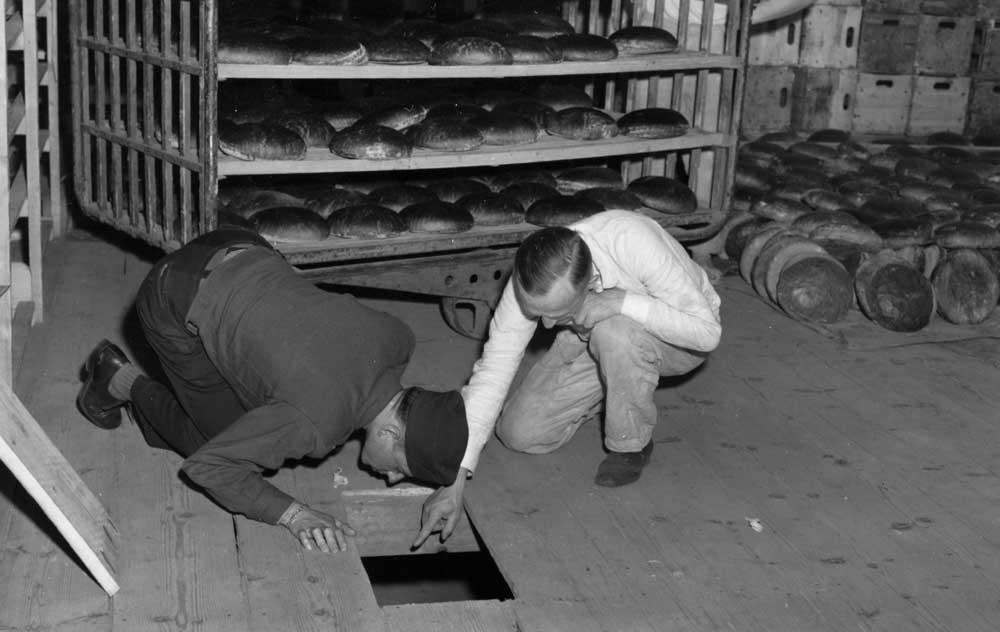‘Nakam’ by Dina Porat review
Nakam: The Holocaust Survivors Who Sought Full-Scale Revenge by Dina Porat explores acts of vengeance in the aftermath of the Second World War.

Nakam is the Hebrew for ‘revenge’, and the 50 men and women who planned mass poisonings of Germans in the immediate aftermath of the Second World War were the Nokmim, ‘Avengers’. They were a secretive group, survivors of the Holocaust, who refused to divulge any hard facts about their activities. Dina Porat, a professor of modern Jewish history at Tel Aviv University, has researched their story in meticulous (and, it should be said, reverential) detail. As Porat herself admits, not every question has an answer, or even lends itself to an interpretation. Even today, some of the surviving Nokmim, well into their nineties, remain tight-lipped, not from fear or regret, but because they do not think the outside world would understand.
Acts of vengeance after 1945 were certainly not uncommon, both from the Allied forces and liberated camp inmates. The bestiality of the Nazis had plumbed unfathomable depths and many could think of nothing but vengeance. Marshal Zhukov told his Red Army soldiers to take ‘a brutal revenge against the Hitlerites’. Porat records that between 150,000 and 200,000 ‘Russian babes’ were born after mass rapes.
Jewish partisans emerging from the forests and the surviving ghetto fighters discovered that there was no one left. Their families and friends were gone. On returning home, they found squatters who asked quizzically: ‘Are you still alive?’ There were pogroms in Kielce, Radom, Częstochowa and Łódź which Soviet forces did not attempt to prevent. Nor did they punish the perpetrators.
Abba Kovner, a leader of the Marxist-Zionist movement Hashomer Hatzair before the war and a Jewish resistance fighter in the Vilna ghetto, gave voice to the feeling of desolation, guilt and aimlessness felt by many who had survived. They were being pulled in different directions: leave the graveyard of Europe and go illegally to Mandatory Palestine, or remain and practise ‘horror in return for horror’. Some did both, helping survivors to leave Eastern Europe through clandestine emigration while planning mass murder at the same time.
This was the shape of the bitter debate that raged within the 5,000 strong Jewish Brigade, a unit of British forces under the command of Brigadier Levi Benjamin. Many of its members had been born in Germany, Austria and Czechoslovakia. Some did not accept the official line of: ‘Yes to rescue, no to vengeance.’
Anger was further fuelled by the belief that Jews were not represented as a national entity, especially during the Nuremberg trials, which were staffed by judges who, the Nokmim argued, could never comprehend what they had been through. Under Kovner’s leadership, two plans were formulated. The first was to find employment at water purification plants in Hamburg, Nuremberg or Munich and use their positions to poison millions. One diversion from the plan at Nuremberg was to ensure that the lethal water was diverted so as to only reach Germans and not the British and Americans and their families.
Porat examines the assumption that Kovner was able to secure poison from the Katchalsky brothers, both eminent scientists, in Mandatory Palestine and that they were abetted by several prominent figures. One brother, Ephraim, became president of Israel during the 1970s. Sailing from Alexandria to France, Kovner was arrested by military police at Toulon and seemingly dumped the poison overboard.
A second plan involved poisoning loaves of bread at a Nuremberg bakery in April 1946 by smearing the underside of cheap ‘dark bread’ with arsenic oxide. The arsenic paste, however, was only partially soluble and difficult to apply. While many Germans fell ill and had their stomachs pumped, it remains uncertain how many – if any – died. Porat suggests that the Americans may have covered up the incident to prevent international outrage; even with classified documents released in 2016, the outcome of this episode is unclear. Analysis of the bucket which held the lethal compound suggests that, had the plan been successful, 100,000 people could have been killed.
In the end, attempts at retaliation came to nothing for a plethora of reasons. The mass poisonings could not be implemented practically; there was a growing desire to ‘choose life’ and a future, as well as an aversion to killing potential innocents. Many feared descending to the level of the Nazis. For others, it proved morally difficult to move beyond words. But the desire for revenge is fathomable, especially when we understand how the Nokmim saw the Holocaust. Dina Porat quotes Itzhak Katznelson, exterminated at Auschwitz in 1944: ‘German children who have not yet killed a Jew are raised to do so, educated to it, dedicated to it by murderous parents and murderous teachers.’ For the Nokmim, every German was complicit.
Nakam: The Holocaust Survivors Who Sought Full-Scale Revenge
Dina Porat, translated by Mark L. Levinson
Stanford University Press 394pp £35
Colin Shindler is emeritus professor at SOAS, University of London.